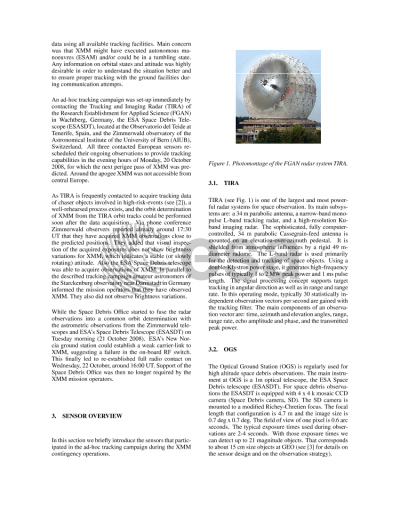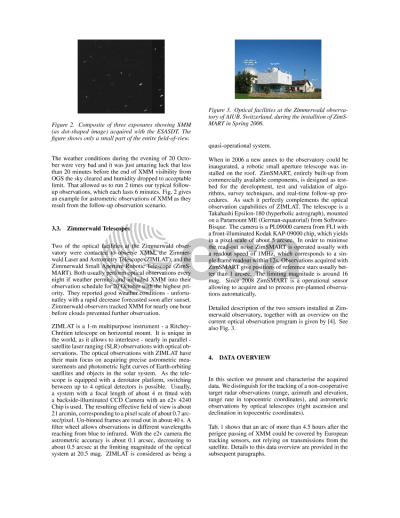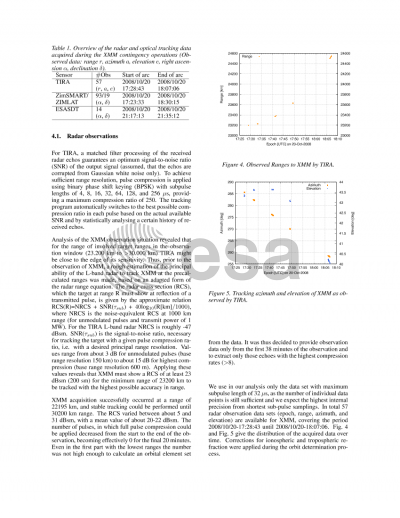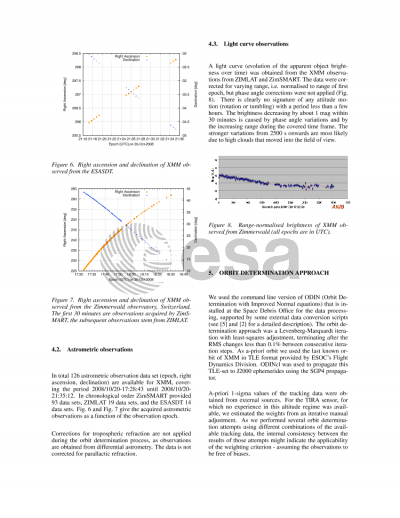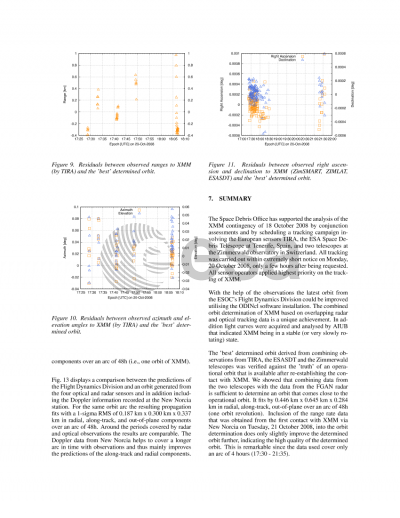Document details

Abstract
On 18 October 2008 the operators of ESA's X-ray Multi- Mirror Mission (XMM-Newton) lost contact with the satellite. XMM is one of Europe's largest scientific satellites. It resides in a highly eccentric (21700 km x 99500 km) orbit with an inclination of 58 deg. The XMM operators asked to support the analysis of the contingency situation, in particular to acquire tracking data of the noncooperative target via suitable tracking facilities, and to determine a precise orbit. Any information on orbital states and attitude was highly desirable in order to better understand the situation and to ensure proper followups with the ground facilities during communication attempts. We present the fusion of radar and optical observations into a common orbit determination of a noncooperative target using the predicted orbit as a-priori information. Three European sensors participated in the adhoc tracking campaign: the Tracking and Imaging Radar (TIRA) of the Forschungsgesellschaft für Angewandte Naturwissenschaften (FGAN) near Bonn, Germany, the ESA Space Debris telescope at Tenerife, Spain, and the telescopes ZIMLAT and ZimSMART at the Zimmerwald observatory of the Astronomical Institute of the University of Bern (AIUB) in Switzerland. All sensors were able to observe XMM close to the predicted positions. In the meantime the New Norcia ground station could establish a weak carrier-link. This finally led to re-establishing full radio contact. We validate the quality of the orbit determination through a comparison with the operational orbit. This work demonstrates the generation of orbit information for passive bodies by using European sensors only, even if the orbit is highly eccentric.
Preview

